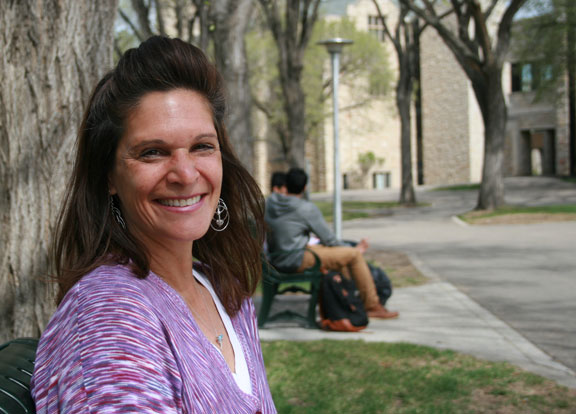Citizen Science
Lalita Bharadwaj is hoping that a successful educational program last year involving U of S grad students and Grade 8 students in four public schools in Saskatoon will garner even more interest this year, and offer even more opportunities for young people to delve into the world of science.
By Colleen MacPherson Bharadwaj, a toxicologist and associate professor in the School of Public Health, was one of the organizers of Citizen Science: Go Green Youth, a partnership that saw grad students from a variety of disciplines work with school students to explore issues that affect and shape local and regional water systems. Bharadwaj has always worked with young people in her research "but this was the first time in Saskatoon that we've made that connection."
Bharadwaj, a toxicologist and associate professor in the School of Public Health, was one of the organizers of Citizen Science: Go Green Youth, a partnership that saw grad students from a variety of disciplines work with school students to explore issues that affect and shape local and regional water systems. Bharadwaj has always worked with young people in her research "but this was the first time in Saskatoon that we've made that connection."
From January to the end of March, about 20 grad students, all volunteers, made numerous visits to Grade 8 classrooms where they worked with small groups of students on projects related to a curriculum unit entitled Water Systems on Earth. The student groups selected a topic, Bharadwaj matched them with a grad student "and off to school they went." The result was a number of interactive hands-on educational mini modules and, said Bharadwaj, a whole lot of learning for everyone.
"The grad students were awesome," she said. "I think they really want to make a connection with youth. They want to share what they do and inform the students that the university isn't a mysterious place, that people do research here that impacts the community."
Bharadwaj was also impressed with the school students, with their questions and their curiosity about science. Among the projects they chose were interactive videos about water security in Canada, the Philippines and China, an opinion survey for Saskatoon about water conservation, and an exploration of bio-accumulation of toxicants in aquatic species. One group even built a model of a water treatment plant.
A particularly creative project saw the school students use a software program to animate their drawings about the affects of pollution on ocean creatures. "It was a chance for them to be creative and artistic, and to bring those to the science curriculum," she said. It was also an opportunity for the young people to teach the grad students a thing or two about video and technology.
"Citizen Science was definitely a pilot to see if it would work," she said, "and I gauge our success on what I've heard back from the teachers, the students and the grad students. The grad students felt it was really good in terms of expanding their ability to mentor and teach, and I heard from the teachers that they felt the learning environment was enriched by the presence of the grad students in their classrooms."
As for the school students, Bharadwaj believes "when they're given the opportunity to pick a topic of interest, they're more enthusiastic and motivated to explore it," and that may lead to a future in science.

